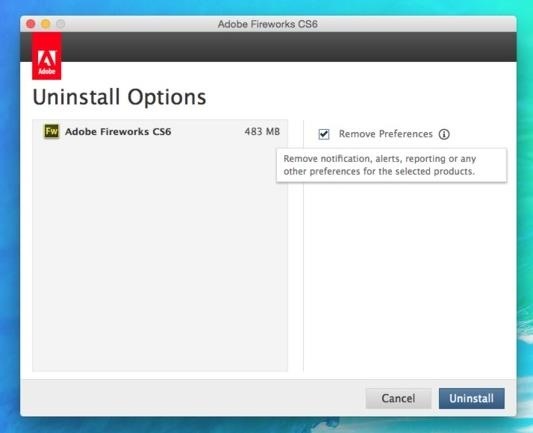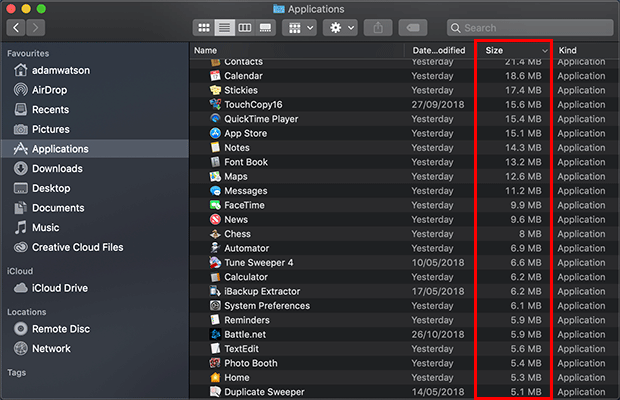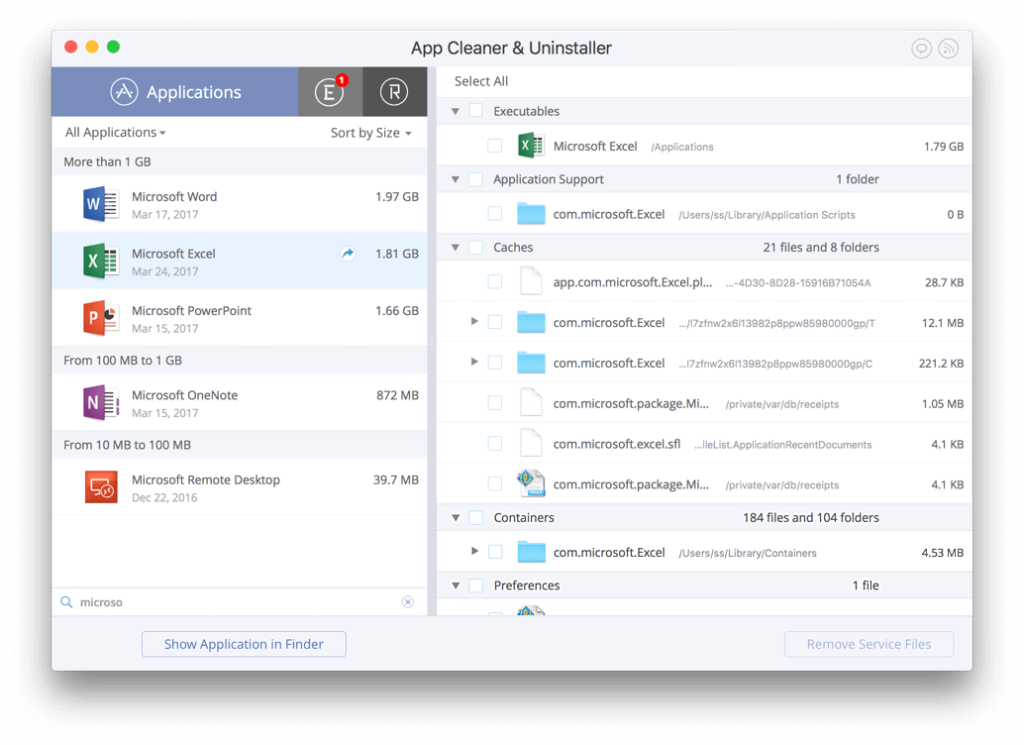We live in the golden age of apps. We are being spammed by the apps forcing us to update, install the latest extension, read some marketing fluff that’s pouring on us from every pop up window. Your best defence is to teach yourself about deleting software properly. And simply dragging apps to the Trash is no way a secure deletion.
Mac OS X is a thoroughly modern operating system, except for the shocking lack of an uninstall program. Dragging an application to the trash removes the app itself from your hard drive (well. How to Uninstall A Program on Mac. To delete a program on Mac, you can follow the instructions below. (1) Open Finder on Mac and click 'Applications' option to preview all programs installed on your Mac. (2) Find and right-click the target program from the list, then click 'Move to Trash' option to uninstall it from your Mac right away.
Why? Because it leaves behind app parts and pieces. And leaving software only half uninstalled will fill up gigabytes of space on your Mac’s hard drive with useless clutter. And sure you could find a better use for that space. That’s why, until Apple decides to make the right choice and develop a better way to completely uninstall apps on Mac, we’ve prepared some efficient tips and tricks to help you uninstall apps manually and keep the performance of your Mac at its peak, day in and day out.
A complete guide to uninstall software on Mac
In this guide, we’re going to show you how to completely remove apps from your Mac in order to free up space and have your Mac running at full power.
We’ve prepared two ways for deleting apps on Mac. We'll start off by explaining manual ways of deleting apps on Mac.
Did you know: Some apps are hard to delete manually as they consist of many unseen parts. In this case, you'll need a special 'app destroyer.' The most popular one is CleanMyMac X by MacPaw.Whichever method you choose, it will help you to correctly remove apps on Mac. You will then have a clean Mac and a lot more free space to store your digital possessions.
What’s more, we’ve also added 2 bonus tips for uninstalling Java and deleting apps via the Terminal:
- Bonus 1: Uninstall Java on Mac
- Bonus 2: Uninstall apps using Terminal
Sounds good? Now, let’s take out the trash!
How to Remove Programs on Mac manually
It’s time for the big reveal. We’re going to show you where to find all the associated app files that remain trapped on your Mac even after you’ve sent an app to the Trash.
But before we proceed, take caution. If you’ve chosen the manual method to remove programs on Mac we admire your determination, but we must also warn you to keep a careful eye on what you’re deleting. You don’t want to end up removing essential files. So, carefully check all the filenames before you begin to uninstall software on Mac and make sure they belong to the app you want to remove.
Sending apps to the Trash
Open your Applications (from the sidebar in Finder).
Select an app and drag it onto the Trash bin. That's it.
What if it doesn't work?
Sometimes, for the mysterious reasons, your Mac would refuse to delete some files. If this happens, reboot your system and try again, after you’ve pressed Command-Option-Esc and made sure the app is not listed as running. If it is, force quit and try again.
The hard truth about leftovers
There’s also the risk of having some app files slip through the cracks of the manual method, if you’re not thorough enough. To illustrate, we've deleted the XCode software by dragging it to the Trash. It ended up leaving 1.9 GB worth of remaining files. It may depend on an app, though.
We'll explain how to eliminate them in a second. But, again, if you'd like to automatically delete these minor app parts, skip to the automatic solution with CleanMyMac X.
Dealing with the remaining parts
Now, let’s gather all strength and begin our manual hunt for app leftovers! To make sure you don’t miss anything and you remove software from your Mac correctly, follow these steps:
Step 1 – write down the name of the apps that you have sent to the Trash and go to the next step to start finding apps leftovers and associated files.
Step 2 – go to the following locations and if you find a folder associated with any app name you have written down, delete it to completely uninstall the programs.
Open the Finder
Click on Finder > Go> Go to Folder...
So, to fully remove an app and its leftovers from your Mac you need to check these locations in the Finder.
That was obviously a cumbersome way to delete things. In the next chapter we'll show the much easier method.
Don’t forget to empty the Trash
Once your apps are moved to the Trash bin you need to empty it. Open the Trash bin and click the Empty button to erase its contents.
How to delete Mac apps automatically
There is a whole category of app uninstallers for Mac that takes advantage of macOS' inability to remove apps completely. Among the trusted tools, you may check CleanMyMac X by MacPaw. It's notarized by Apple and is the most user-friendly compared to analogous apps.
You may download the free edition of CleanMyMac X here. This app will detect the unseen apps and you can delete many apps at once by simply checking them in the list. The free version that allows you to clean a big portion of junk. This means you can delete a couple of un-deletable apps at no cost.
If you like it, you’ll be able to upgrade to the paid version and give your Mac a full clean out. You’ll also be able to uninstall apps on Mac correctly at any given time, without limits.
To remove apps from Mac the easy way with CleanMyMac X follow these steps:
- Launch CleanMyMac and go to the Uninstaller tab
- Click View All Applications
- Select any app you want to remove completely
- Click Uninstall to remove 100% of the app from your Mac
As you can see from the screenshot, there is an option to filter out the AppStore apps, the Unused apps, 32-bit ones and more.
Download Free VersionUninstall applications using Launchpad
You can use Launchpad to get rid of your apps and widgets.
- Open Launchpad in the Dock
- Hold down the Command key and click on any app
- Wait until the apps start shaking
Now you can click the hovering [X] icon to delete the app.
How to completely uninstall Java from your Mac
Java plugin is known to have conflict issues with many apps. Re-installing it helps to get some Mac’s services back to working. But completely removing Java might seem a bit harder than uninstalling normal apps. However, it’s not rocket science. With a few clicks and double-clicks, you’ll be ready to enjoy more space and more speed from your Mac, free from the clutter. Space you can, of course, use to install another Java version if you please.

So here’s how to completely delete Java. Remove one directory and one file (a symlink), as follows:
- Click on the Finder icon located in your dock
- Click on the Utilities folder
- Double-click on the Terminal icon
- In the Terminal window Copy and Paste the commands below:
- sudo rm -fr /Library/Internet Plug-Ins/JavaAppletPlugin.plugin
- sudo rm -fr /Library/PreferencePanes/JavaControlPanel.prefPane
- sudo rm -fr ~/Library/Application Support/Java
How to uninstall apps on Mac using Terminal
We've shown you how to remove Java plugin using Terminal. But as one might guess, it works for any other app. This procedure requires 2 commands: 1) Finding the app's location (using the mdfind command) 2) Removing that folder using sudo rm -rf. The latter command may cause damage, so don't use it if you're not sure what you doing).
Okay. Open your Terminal app (you can type its name into the Launchpad)
1. First, we'll find the app's location
Now, paste this command into the Terminal window:
mdfind -name <The name of your app>
For example, the app I'm trying to delete is named 'NVU'
Press enter and the Terminal will show you where the app is located on your Mac.
2. Delete that particular path
To remove the app, paste this command into the Terminal window:

sudo rm -rf <The location you've just found>
In my case it looks like this:
Note: sudo rm -rf may break your system if used incorrectly. You may delete your entire user account. If not sure, try other methods described in this article.
Now, enter your password to confirm.
Did it work? Congratulations — you may officially call yourself a geek now.
How to reset apps without deleting them
Yes, you can do that too. Resetting an app is easily the greatest do-it-yourself trick any Mac user can try. What it does is brings the application to its default state, and most importantly, leaves your user data intact. For example, your apps are out of sync with one another so what the reset does is helps restore the initial app settings. It deletes the app cache that causes lots of software glitches. The App Reset feature is found in the Uninstaller tab in CleanMyMac X.
By the way, you can even reset your Mac's default apps, like Safari if they are broken. Here's me resetting my Safari browser:

To use these feature, which is really a hidden gem, open the Uninstaller tab in CleanMyMac X (download its free edition here)
- Find and click on the Uninstaller tab.
- Choose any app in the list
- Click on the dropdown menu under the Uninstall button. This reveals the Reset option.
Now you know everything needed to delete apps on Mac the correct way, achieve complete uninstallation and remove annoying quirks and strange apps behaviors. Whether you choose the manual method or opt for the clean up app CleanMyMac X, you can be sure your Mac will be free of unnecessary app files that eat up disk space in vain. Staying safe and clean feels great, right?
This happens all the time, you install a new fresh program with a hope to sort out your issue, but after a period of dissatisfactory usage, you decide to uninstall it. But what you find in the course of your action really irritates you a lot.
“The uninstallation is not happening”.
Out of the blue your program becomes quite dodgy to being removed from your system permanently. There are various plausible reasons that can be put forth in its relevance, mostly are related to specific file corruption by virus and malwares. And most applications leaves unwanted traces behind and refuse to uninstall. But none of those discussions can help in real to get rid of the actual mess.
Don’t worry, relax and take a deep breath my friend. If you are reading the article right now, all that you need to do is to follow up the guidelines given below with proper attention and expertise.
#1: Force Uninstall Windows Program using Registry Keys
Windows Registry is the database where all the options and settings of the operating system are stored. A mere change or quick alteration in any of the keys by mistake can render this issue of uninstallation problem. Now the solution too lies within this database. Carry on with your reading to know how to uninstall a program that won t uninstall.
Step 1. Press “Run” to open the “Run” panel at the left corner of the screen.
Step 2. Type “regedit” and hit “Enter” and you will be instantly directed to the Registry Editor page.
Step 3. Go to the following location to find out the program uninstall key:
HKEY_LOCAL_MACHINESOFTWAREMicrosoftWindowsCurrentVersionUninstall
Step 4. When you reach the uninstall folder within the correct version folder, you will get to see various keys belonging to different programs in your operating system. Few of those program keys are named after the program, and few are named with random numbers and letters which make no sense at all. Now if you click on any one of those key, all the information is displayed on the right hand side pane, with a Display name which shows the actual program name.
Step 5. Next delete the key by right clicking on it and removing the key along with all its items.
Now you luckily your program that you so desperately were trying to uninstall will not appear on the program list, a clear indication of your clear success.
#2: How to Remove A Stubborn Program using Safe Mode
Safe mode is a special mode of Windows with which you can access your system in a safe haven. Only the necessary tools and drivers will remain active suspending the rest of the interrupting programs including the viruses which are responsible for the very issue. So once you are in via the safe mode, you can now uninstall your program in the usual manner. To do that, follow the given instructions:
Uninstall Programs On Mac Free Downloads
Step 1. Click on “My Computer” and select “Uninstall or change a program” option from the tool bar and you will be taken to the list within the control panel, where you can uninstall your programs.
Step 2. Double click on the program you wish to remove, and select “Uninstall” from the pop-up choice.
Step 3. Continue this way to remove all the programs one by one and then restart your computer and enter it in the normal mode, and you will have all the programs deleted from your system.
#3. How to Force Uninstall Program using IObit Uninstaller
Looking out for a third party help in the ultimate way out to get rid of this situation, but make sure to choose the right software to assist you. IObit Uninstaller is one of that safest uninstaller software which comes completely free. Read intently the step guidelines to know its workings:
Step 1. Download the software file from the internet on your computer and install it adequately.
Step 2. Launch the program and you can see the list of all your installed programs from the “All program” option on the left hand side panel of the tool window.
Step 3. Check the programs that you wish to get rid of by clicking the checkboxes next to the program names, and then click “Uninstall” button on the toolbar.
Step 4. Select any mode, either “Advanced” or “Standard” and click “Uninstall”.
Step 5. The tool will ask for your confirmation. Simply click “Yes” button.
Most of the tools ask you to reboot your computer immediately to apply the changes permanently, but IObit Uninstaller can wait for you to reboot later as per your choice.
#4. Uninstall Program in Safe Mode
Programs that put locks on your system are often the same programs which start with your computer and sit in the background. You can use Windows’ Safe Mode, which cuts down on the amount that runs and, if you choose the appropriate option, prevents your machine (or problem apps) from talking to the internet, to (hopefully) do away with them without those troublesome locks.
If you’re running Windows 10, just hold [Shift] and select Restart in the Start menu as you normally would; with earlier versions of Windows you can access Safe Mode by tapping [F8] as your computer starts and selecting the appropriate option. Once you’re in, attempt the uninstall either through Control Panel or the software’s dedicated uninstaller.
#5. Restore from A Backup
System Restore is only useful if your computer is accessible enough that you can get to it. If a program has rendered Windows 10 completely insensible, you’ll be out of luck – System Restore isn’t a proper backup, as such, more a record of changes made to your system. A full backup, then, could make all the difference.
We tend to lean towards Macrium Reflect Free for this task. It’s perfect for cloning one drive to another (so you’ll need an external drive as large as your boot drive) and there’s a Windows PE-based restoration tool, bootable via a USB stick, to help you get your drive back in order.
Bear in mind, though, that this is a long-winded process; creating an entirely new backup will take a few hours, and it’ll tie up your computer while it’s happening.
View All
Is It Gone?
Uninstalling a program file can really give way to a serious headache if it is compromising your work. Thus it is very much necessary to find some alternative to force uninstall your program by any means. Few of those means or methods are demonstrated above, from which you can choose any according to your convenience. In my opinion choosing IObit Uninstaller is a much secured and a quicker approach to resolve the issue, otherwise the first two conventional methods would work too if you deal with them correctly.
Once you are alleviated off all the unnecessary garbage program files, make sure to be cautious while downloading softwares from internet the next time. You can also use anti-virus to check for the virus issues as well.